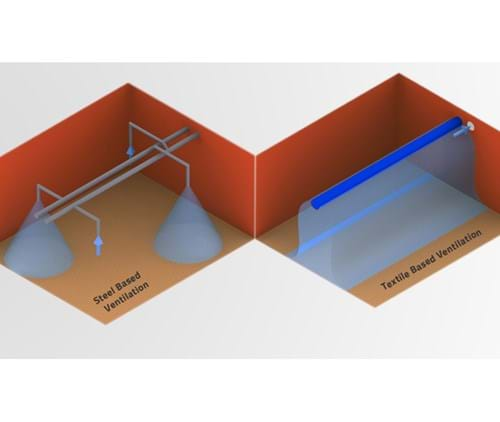Why choose textile or fabric ducts in stead of steel ducts, sheet metal ducts?
10-10-2018
The above drawing shows clear differences between the the two systems. Steel ducting or steel based ventilation (left) only deliver air through specific orifices in the duct. In e.g. a classroom the students sitting far from an orifice will lack fresh air whereas the students sitting right below the orifice holes may experience draught problems.
Textile based ventilation or textile ducting (right) is characterized by air diffusion across the entire surface, i.e. throwing air into the occupied zone.
Where steel ducting creates a risk of "dead" zones in the room, textile ducting offers a uniform distribution of air through the entire duct. This results in efficient air exchange and healthy indoor climate.
Textile ducts are tailored in colour, shape and size to match the architecture and the ventilation demands. Textile ventilation ducts are easy to install and to adjust and are also energy-efficient compared with steel ducting.
Read more about textile based ventilation